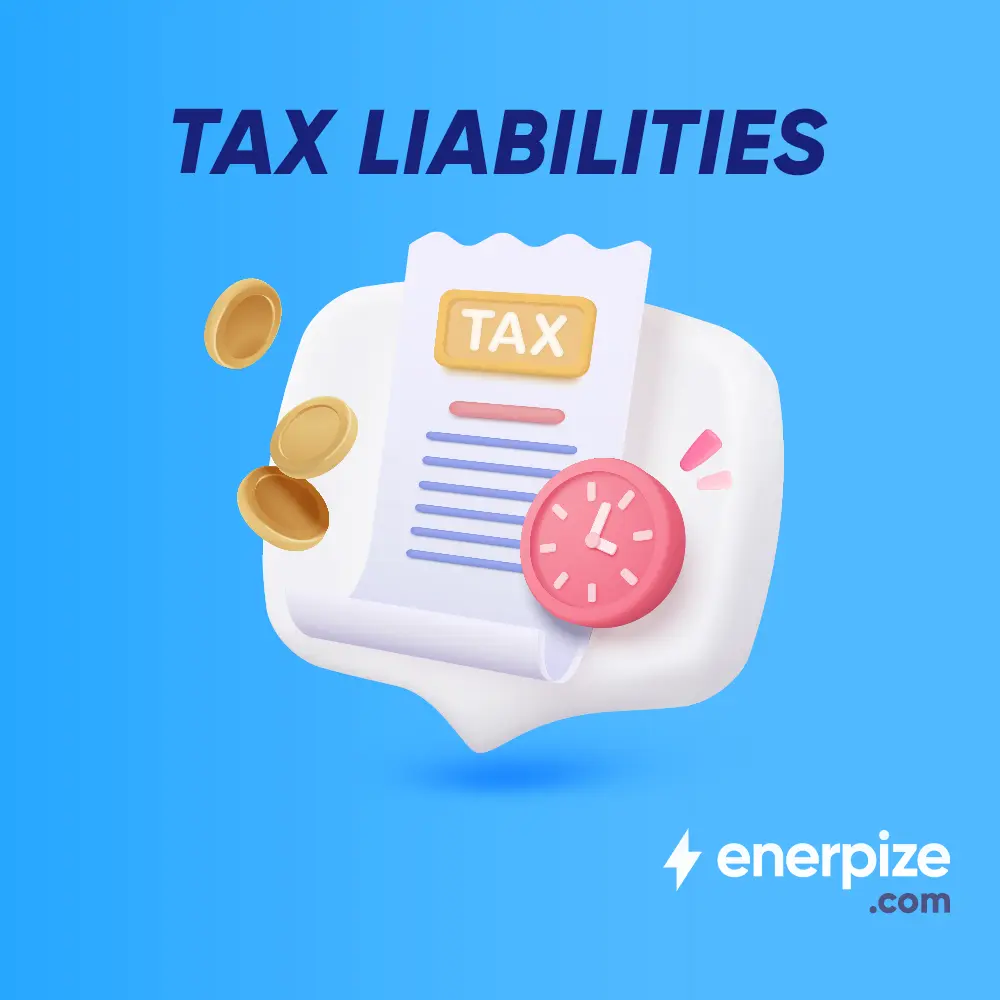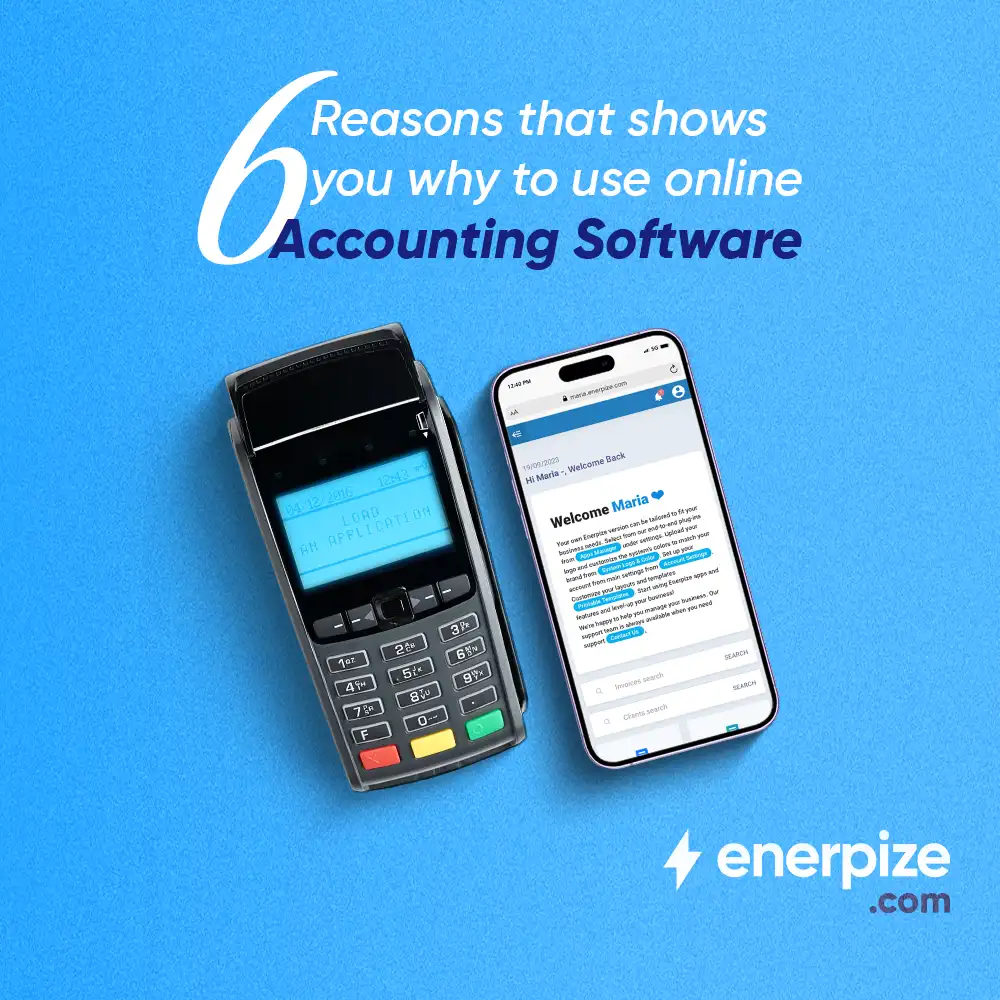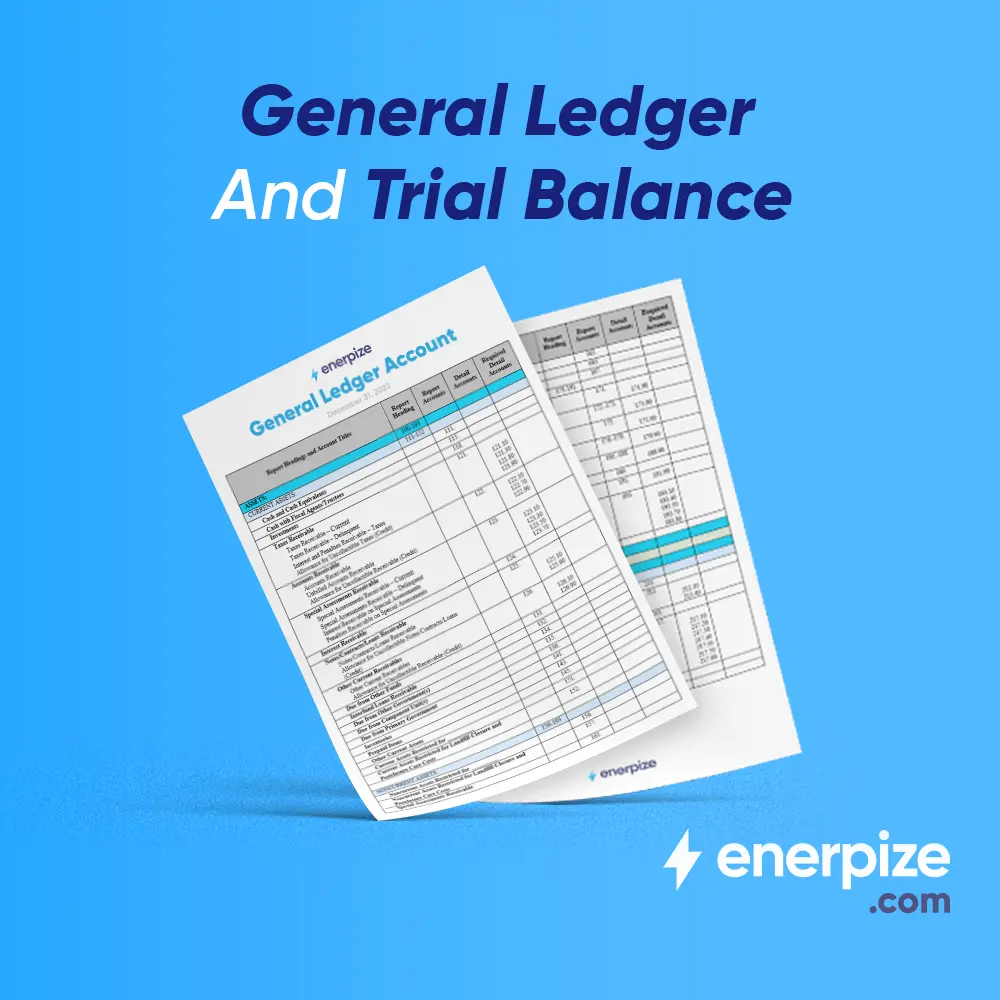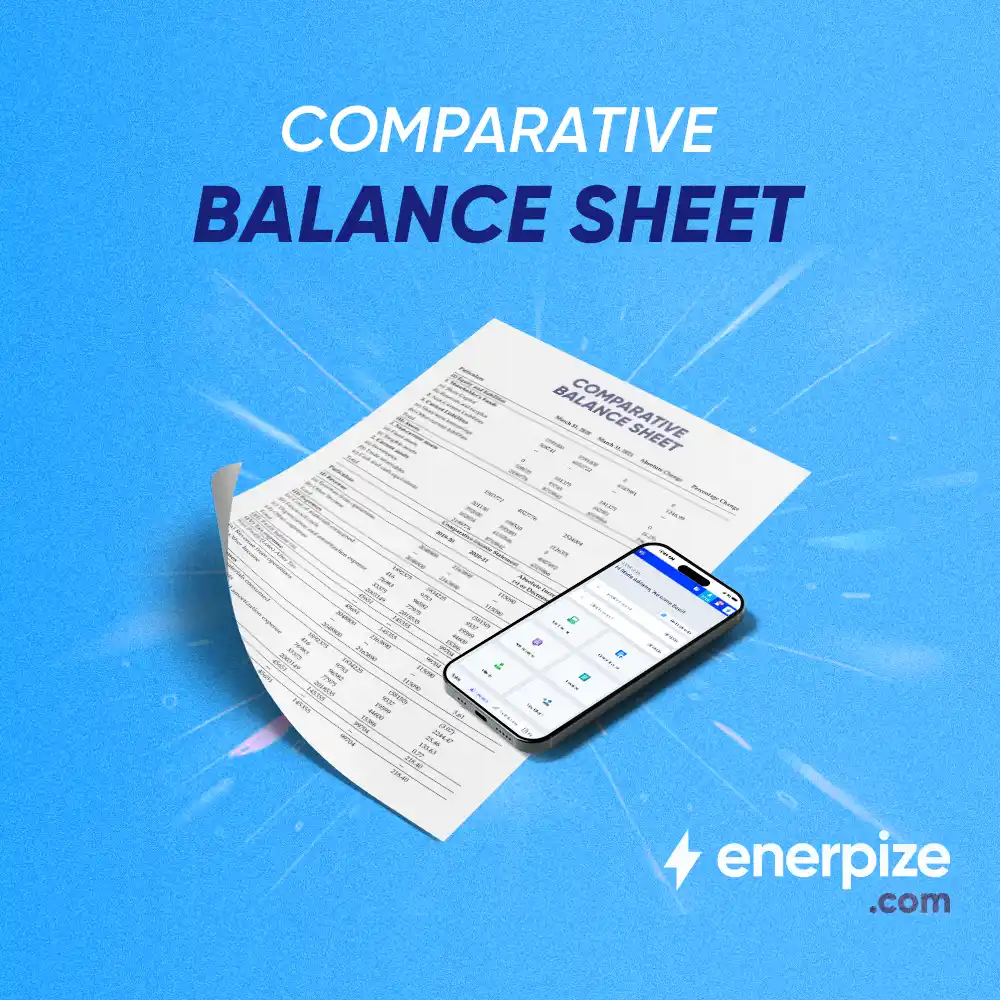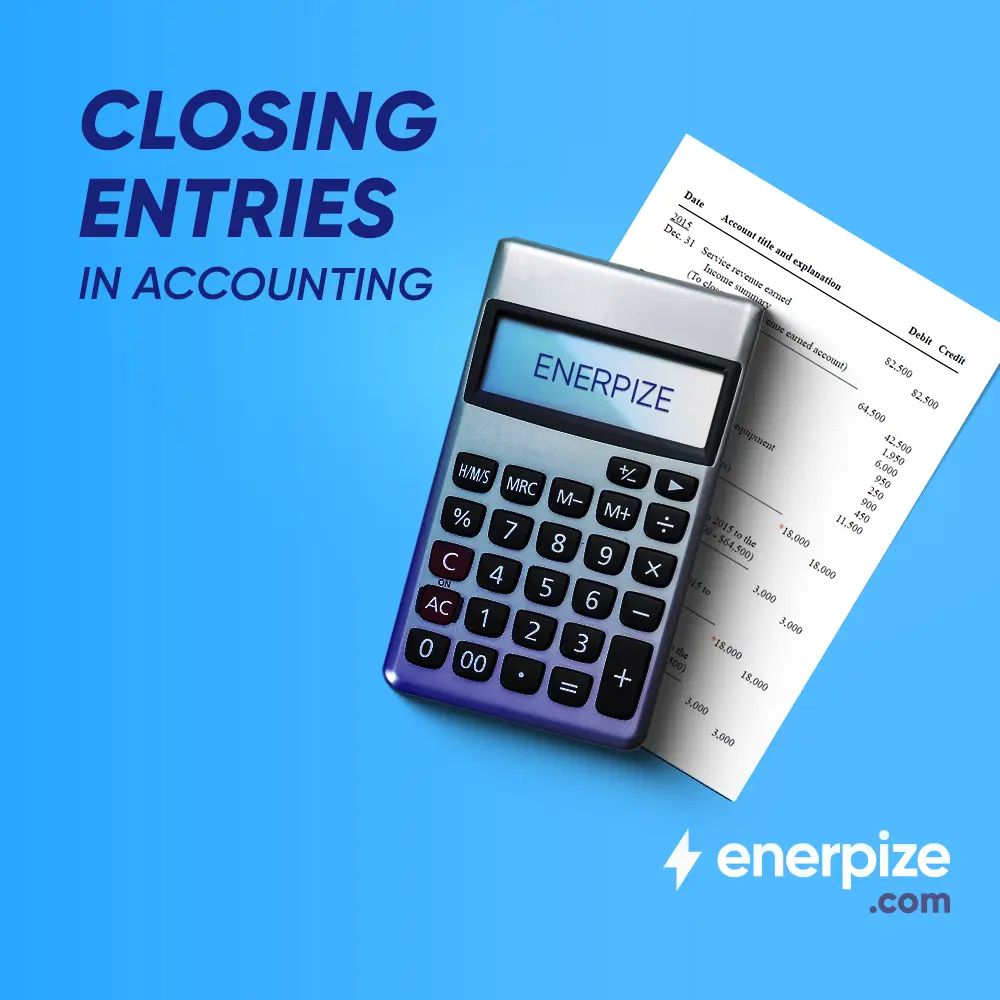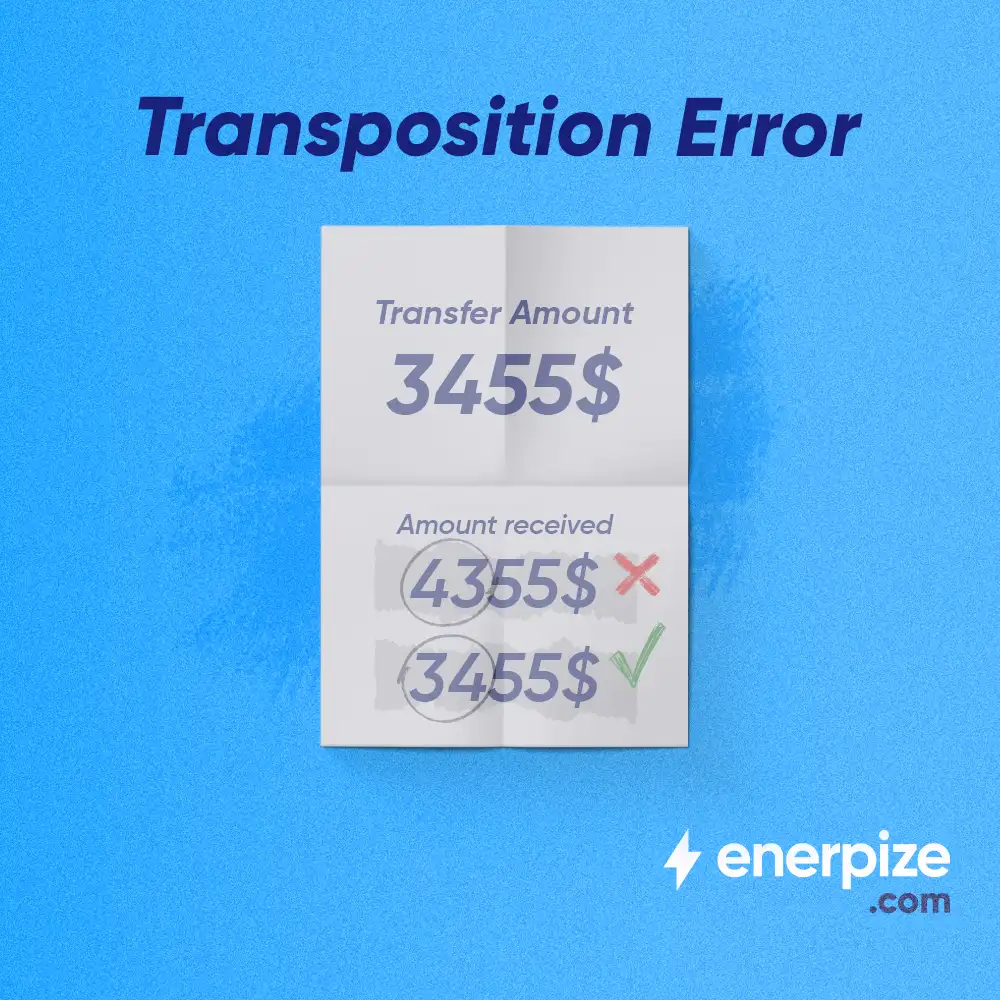Author : Haya Assem
What Are Long-Term Liabilities: A Comprehensive Guide
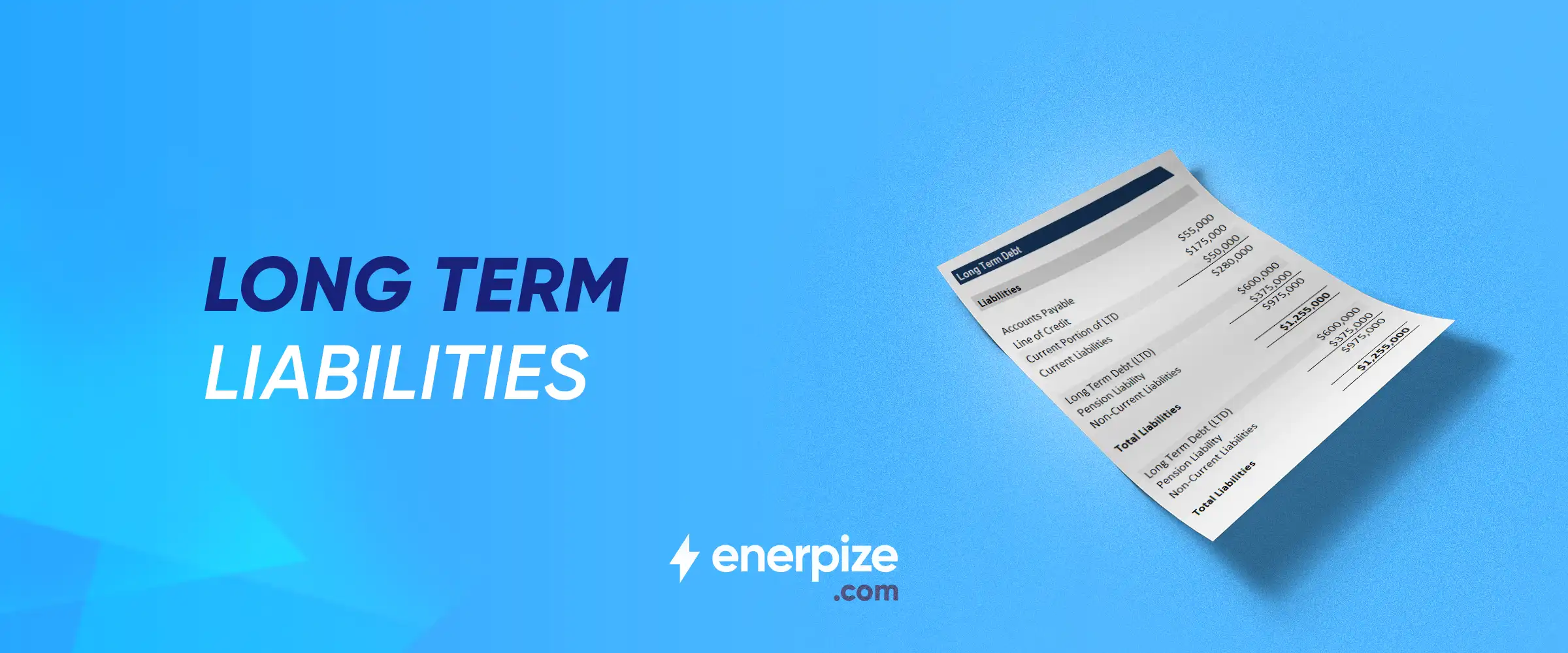
Table of contents:
- What Are Long-Term Liabilities?
- What Makes A Liability A Long-Term Liability?
- Long-Term Liabilities Examples
- How To Calculate Long-Term Liabilities
- Long Term Liabilities Meaning In Business
- What Are Long-Term Liabilities On A Balance Sheet
- How To Manage Long-Term Liabilities Effectively
- Short Term VS Long Term Liabilities
- How Can Enerpize Help In Managing Long-Term Liabilities
- FAQs About Long-Term Liabilities
Long-term liabilities are vital to evaluating a company’s financial structure, stability, and future obligations. These liabilities play a central role in funding large investments and long-term operations, and how businesses manage them can significantly influence both risk and profitability.
Key Takeaways
- Long term liabilities are financial obligations not due within the next 12 months, often tied to major investments or financing arrangements.
- Common types include long-term loans, bonds payable, lease liabilities, deferred tax liabilities, and pension obligations.
- On the balance sheet, long-term liabilities are listed under the “Non-Current Liabilities” section, separate from short-term obligations.
- While long-term liabilities enable business growth and improve access to capital, they also carry risks such as debt servicing costs and potential solvency concerns.
- Effective management of long-term liabilities involves reviewing debt terms, budgeting for payments, maintaining a healthy debt-to-equity ratio, and using accounting software for automation.
- Differentiating between short-term and long-term liabilities is crucial for understanding a company’s liquidity and long-term financial stability.
What Are Long-Term Liabilities?
Long-term liabilities are financial obligations that a business is expected to settle beyond one year from the reporting date.
Unlike current liabilities, which are due within 12 months, long-term liabilities reflect the company’s long-term financial commitments, such as loans, bonds, or lease obligations.
Long term liabilities are recorded on the balance sheet under the non-current section and are crucial for evaluating a company’s ability to meet debt obligations over time.
What Makes A Liability A Long-Term Liability?
What classifies a liability as a long-term liability is primarily its due date. To be considered a long-term liability, the obligation must not be due within the next 12 months from the reporting date. Also, long term liabilities are typically associated with major investments or financing arrangements and are expected to be settled over multiple years.
Long-Term Liabilities Examples
It’s essential to understand the different types of long-term liabilities for recognizing how businesses fund growth and manage future obligations. These liabilities often involve structured agreements and extended repayment periods.
Here are the most common examples of long-term liabilities:
Long-Term Loans
Loans from banks or financial institutions with maturities longer than one year are long-term liabilities. These loans are often used to fund expansion, equipment, or property acquisition.
Bonds Payable
These are debt securities issued by a company to investors and typically mature in 5, 10, or more years. The company pays periodic interest and repays the face value at maturity.
Lease Liabilities
Under accounting standards like IFRS 16, long-term leases (e.g., office space for 10 years) are recorded as long-term liabilities, unless they’re short-term or low value.
Deferred Tax Liabilities
These arise when accounting income is higher than taxable income and taxes will be owed in the future, usually due to temporary timing differences.
Pension Obligations
If a business offers defined benefit plans, the long-term payouts promised to employees are recorded as long-term liabilities.
How To Calculate Long-Term Liabilities
There’s no fixed formula for calculating long-term liabilities, as the components vary based on each company’s financial structure. However, the standard approach is to sum all entries listed under non-current liabilities on the balance sheet, which collectively represent the company’s total long-term financial obligations.
To make it clearer, here’s a simple example:
If a business has:
- Bonds Payable: $80,000
- Equipment Loan (non-current portion): $45,000
- Deferred Tax Liability: $15,000
Total Long-Term Liabilities = $140,000
Related reads you might find helpful: How to Calculate Liabilities
Long Term Liabilities Meaning In Business
Long-term liabilities are often used to fund major investments like buying property, expanding operations, or acquiring equipment. While they allow a business to grow without needing to pay large amounts upfront, non-current liabilities also come with ongoing responsibilities, such as interest payments and future repayments.
Long-term liabilities can help a business expand and build credibility if managed wisely. However, if the debt becomes too high without enough income to support it, it can lead to financial strain and reduced flexibility. That’s why balancing debt with income and assets is essential to maintaining financial health.
Long-term liabilities Advantages
Long-term liabilities offer key advantages for businesses:
- Access to Capital: They provide the funds needed for major investments without draining cash reserves.
- Support for Growth: Borrowed capital can be used for expansion, asset purchases, or strategic projects.
- Improved Credit Profile: Successfully managing long-term debt enhances the company’s credibility with lenders and investors.
Long-term Liabilities Disadvantages
Long term liabilities also involve certain risks:
- Debt Servicing Costs: Ongoing interest and principal payments can reduce overall profitability.
- Solvency Concerns: Excessive long-term debt, especially if not backed by adequate earnings or assets, may signal financial instability.
While these long-term liabilities offer valuable financial support for business growth and long-term investments, they also require careful consideration and management to avoid future financial pressure. Balancing these advantages and disadvantages supports maintaining healthy financial stability over time.
You might also find this helpful: How To Record Contingent Liabilities: with Examples
What Are Long-Term Liabilities On A Balance Sheet
Long-term liabilities appear under the “Non-Current Liabilities” section of a company’s balance sheet. These obligations are due over an extended period and typically relate to long-term financing or future financial responsibilities.
Presenting them separately from current liabilities allows stakeholders to better assess the company’s solvency, long-term risk exposure, and overall debt structure.
Common long-term liabilities found on a balance sheet include:
- Bonds payable
- Long-term loans
- Long term lease liabilities
- Deferred tax liabilities
- Pension or retirement benefit obligations
- Notes payable (if due after 12 months)
How To Manage Long-Term Liabilities Effectively
Effectively managing long-term liabilities is essential for maintaining financial stability and ensuring the business remains solvent over time. To ensure that long-term liabilities remain an asset rather than a burden, businesses should adopt a proactive and strategic approach, which includes the following practices:
Regular Review of Debt Terms
Periodically review loan agreements to monitor interest rates, repayment schedules, and maturity dates. Look for opportunities to refinance or renegotiate terms when market conditions are favorable.
Budgeting for Interest and Principal Payments
Incorporate all upcoming payments into cash flow forecasts. Ensuring that adequate funds are available helps prevent missed payments and penalties.
Maintain a Healthy Debt-to-Equity Ratio
Keep your leverage within industry norms by balancing borrowed funds with equity. A strong ratio improves your appeal to lenders and investors.
Use Software for Automation
Leverage ERP or accounting software to automatically track amortization schedules, upcoming due dates, and interest payments. Automation reduces errors and enhances visibility into your long-term obligations.
Short Term VS Long Term Liabilities
Being able to recognize short-term and long-term liabilities is essential for evaluating a company's liquidity and overall financial health. While both represent obligations a business must fulfill, the key distinction lies in their payment timelines and how they affect financial planning.
Definition
- Short-term liabilities definition: Also known as current liabilities, these are obligations that are due within 12 months or within the company’s operating cycle.
- Long term liabilities definition: They are financial obligations that a company is not required to settle within the next 12 months.
Examples
- Short-term liabilities: They are typically linked to daily operations and include items like:
- Accounts payable
- Wages payable
- Taxes payable
- Short-term loans
- Accrued liabilities
- Long-term liabilities: They support strategic investments and long-term financing, including:
- Bonds payable
- Long-term loans
- Deferred tax liabilities
- Lease obligations (non-current portion)
- Pension obligations
Importance
- Short-term liabilities are important for assessing a company’s liquidity, its ability to meet immediate financial obligations using current assets.
- Long-term liabilities help assess a company’s solvency, its ability to meet long-term financial commitments, and maintain financial stability over time.
By analyzing both types of liabilities, businesses can better plan for short-term obligations while maintaining a sustainable long-term financial strategy.
How Can Enerpize Help In Managing Long-Term Liabilities
As businesses expand, manually tracking long-term liabilities, or non-current liabilities, can become time-consuming and prone to errors. Enerpize online accounting software offers a streamlined solution by automating financial processes, reducing human error, and delivering real-time insights into your company’s long-term obligations.
Here’s how Enerpize helps:
- Automated Liability Tracking: When recording long-term loans, lease liabilities, or deferred taxes, Enerpize updates the appropriate accounts automatically, ensuring accurate reflection in your balance sheet.
- Real-Time Financial Reporting: Monitor updated totals of non-current liabilities alongside key financial ratios like the debt-to-equity ratio and interest coverage ratio to evaluate risk and financial leverage instantly.
- Integrated Accounting Modules: Whether liabilities originate from asset purchases, payroll, or financing activities, all data flows seamlessly into the system without duplicate entry, supporting accurate financial reporting.
- Improved Decision-Making: Businesses gain full visibility into future financial obligations, enabling better forecasting, budgeting, and long-term planning.
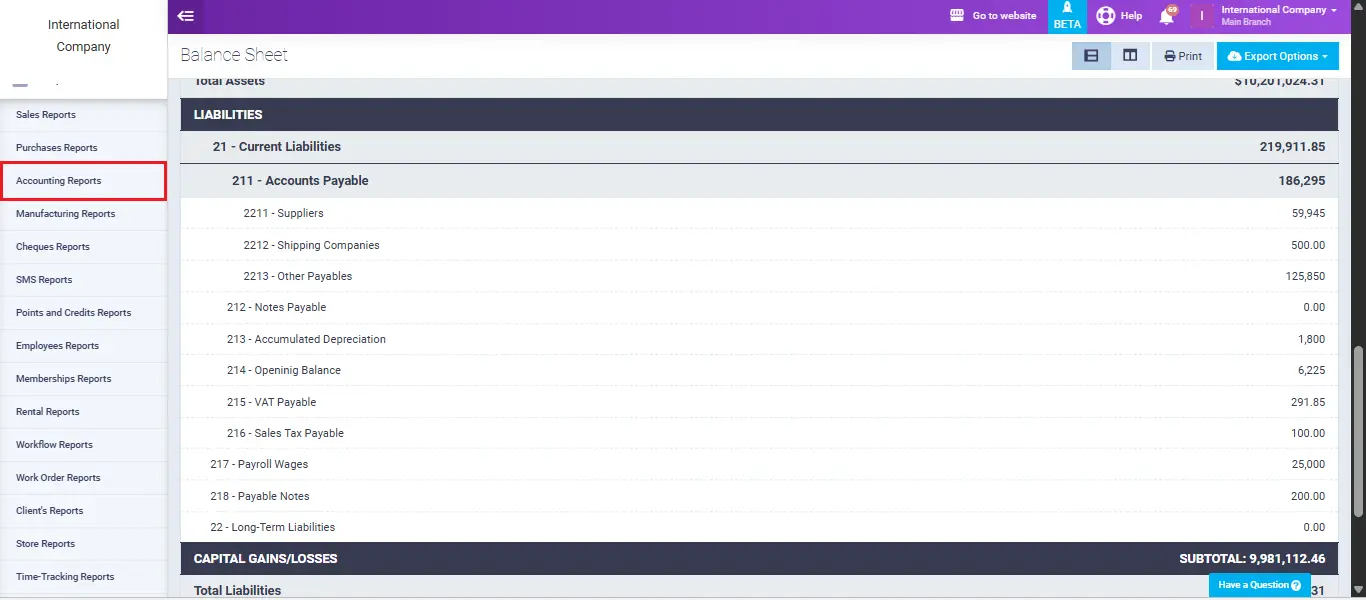
FAQs About Long-Term Liabilities
What is an example of long-term liability?
Common examples of long term liabilities include:
- Bonds payable
- Long-term bank loans
- Lease obligations beyond 12 months
- Pension obligations
- Deferred tax liabilities.
What are the top 10 liabilities?
Liabilities vary by business, but the most common ones across industries include:
- Accounts payable
- Wages payable
- Short-term loans
- Accrued expenses
- Taxes payable
- Long-term loans
- Bonds payable
- Lease liabilities
- Deferred tax liabilities
- Pension obligations
How many years is a long-term liability?
A liability is considered long-term if it is due beyond 12 months from the reporting date. While there’s no strict limit on the number of years, the key factor is that repayment is not required within the upcoming financial year.
Is interest payable a long-term liability?
Typically, no. Interest payable is usually classified as a short-term liability because interest is due in the next accounting period.
Are notes payable long-term liabilities?
It depends on the due date. If the note is due after 12 months, it is considered a long-term liability. If it’s due within the next year, it should be classified under current liabilities.
Managing long-term liabilities is easy with Enerpize.
Try Enerpize accounting software to track and manage liabilities.


